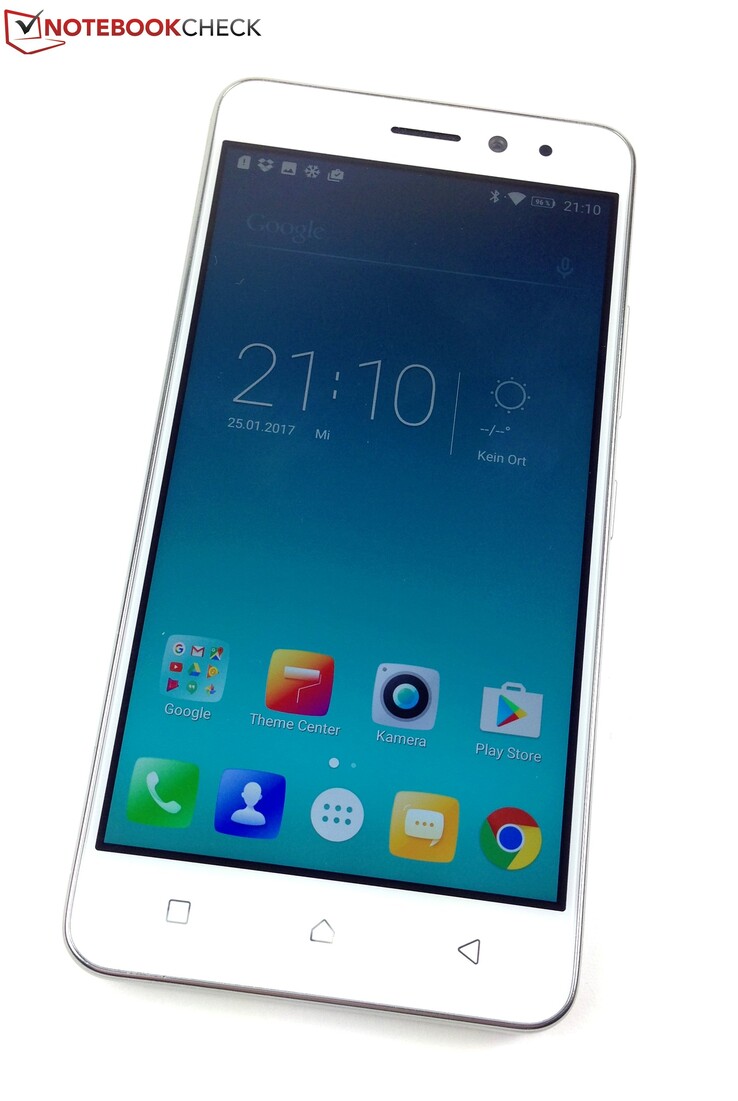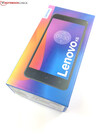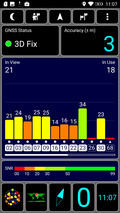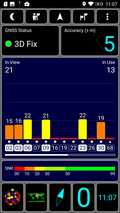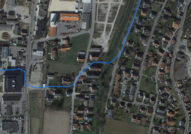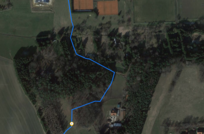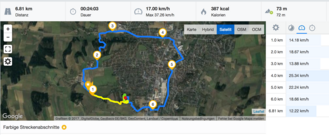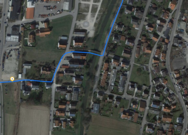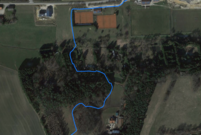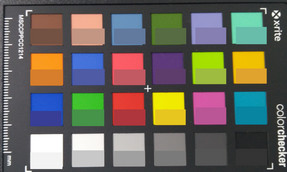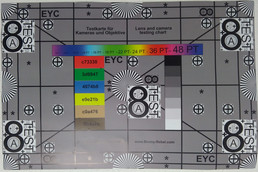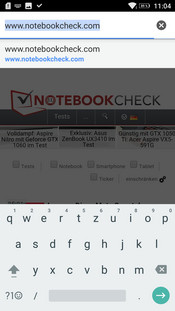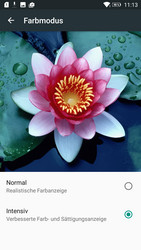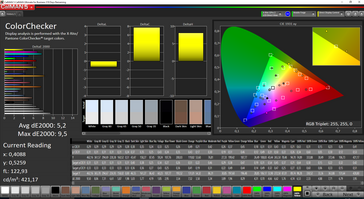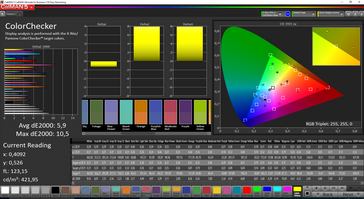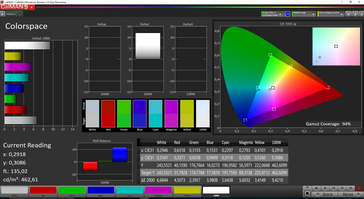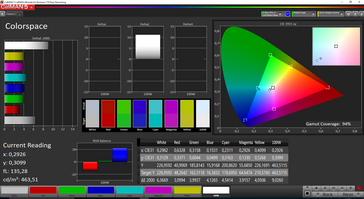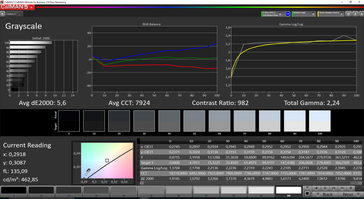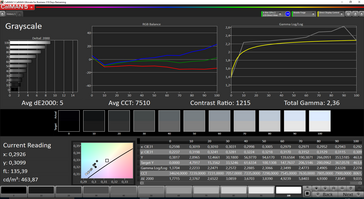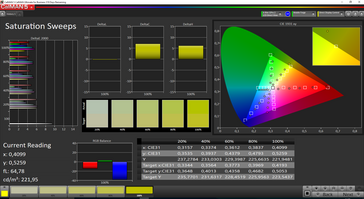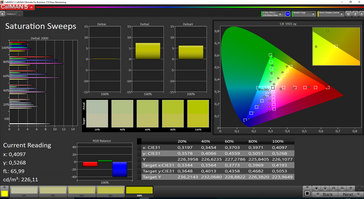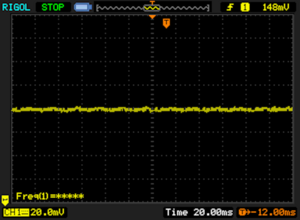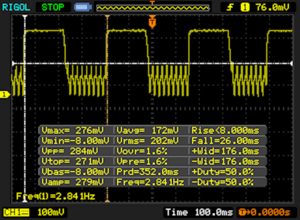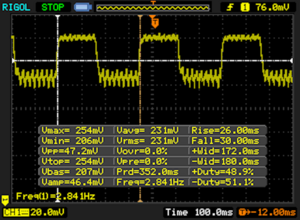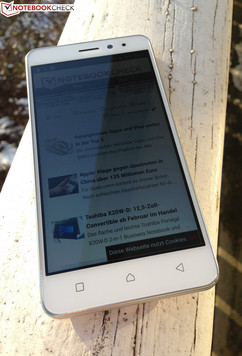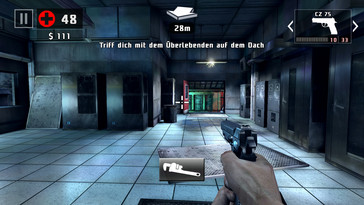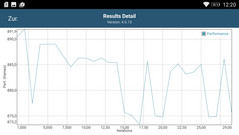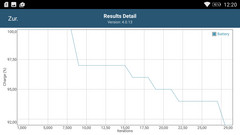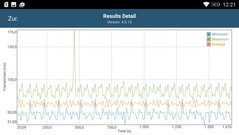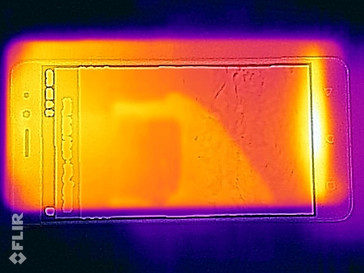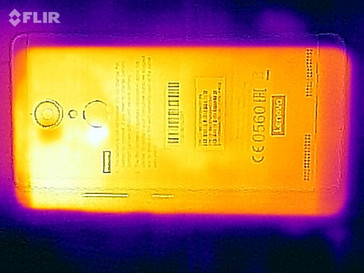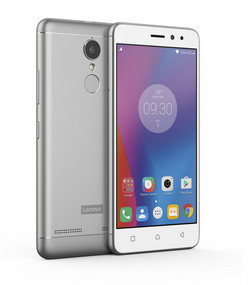Lenovo K6 Smartphone Review
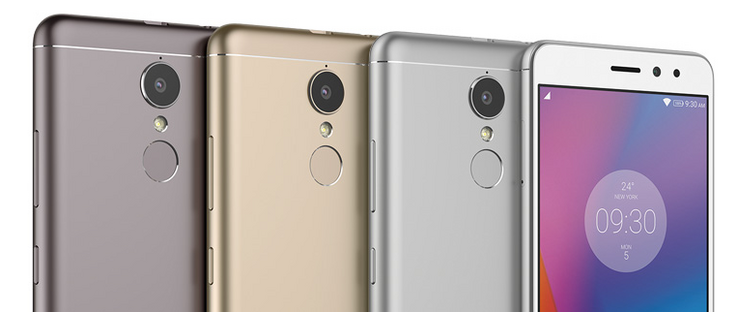
For the original German review, see here.
Very decent hardware and a low price - Lenovo has compelling arguments to steer smartphone buyers towards their middle-class K6 smartphone. The official retail price is 199 Euro (~$215), but we've managed to find the smartphone for less than 180 Euro (~$195) elsewhere. For the given price point, the 5-inch smartphone has a lot of features: a Full-HD display, a 13 MP camera, dual-SIM functionality, Dolby Atmos stereo sound as well as a 3000 mAh battery. Also on board: a fingerprint reader, which is a rarity in this class. The phone is powered by a middle-class Qualcomm Snapdragon 430 SoC and comes equipped with 2 GB RAM, 16 GB of flash storage, and an integrated Qualcomm Adreno 505 GPU. The K6 ships with Android 6.0 Marshmallow - a fairly current version of the Google OS.
Lenovo offers two other K6 models, which are also equipped with a Snapdragon 430 SoC and features like LTE, dual-SIM, and a fingerprint reader. The K6 Power is almost identical to the review smartphone, save for its larger 4000 mAh battery. The other version - called K6 Note - is a little different, as it comes with a larger 5.5-inch display, up to 3 GB of RAM and up to 32 GB of flash storage. The main camera features a higher pixel count (16 MP) and at 4000 mAh, the battery is beefier as well.
For our review, we'll compare the K6 to similarly-equipped smartphones like the Acer Liquid Z630S, the Honor 5X, the LG K10, the Samsung Galaxy J5 (2016), and the Wiko U Feel Prime.
Case
Although it might not appear that way at first - the surprisingly low weight of 140 g contributes to this impression as well - the smartphone features metal unibody design, which is available in either dark-gray, gold, or silver (our review unit). Thanks to the rounded corners and edges, close-to-unnoticeable gaps and solidly integrated physical buttons, the case is impressive from both a design standpoint as well as haptic feedback is concerned. The metal chassis is very sturdy and the K6 resisted flexing even during our more vigorous twisting attempts without any creaking sounds. The display itself also remained completely unaffected.
At 8.2 mm, the phone is one of the slimmest ones in our comparison. The Honor 5X and the Wiko U Feel Prime are about as thick; the Samsung Galaxy J5 (2016) is a smidgen thinner at 8.1 mm. The fingerprint reader in the middle on the back is slightly recessed, which makes it easy to locate by feel. The location of the Micro-USB port up top is slightly unusual and the bottom edge only contains the microphone. The location of the stereo speakers seems less convincing, as they are on the back, resulting in muffled sound when the smartphone is placed on a table. Thanks to the Dolby Atmos surround sound technology, it doesn't matter that both speakers are located on one side: when holding the K6 in landscape mode, the sound nonetheless seems to be coming from both sides.
Connectivity
The K6 comes equipped with 2 GB of RAM and the middle-class Qualcomm Snapdragon 430 SoC and is capable of very decent performance. The smartphone might not be speed demon, but it offers enough performance to run current applications. The same is true for the octo-core SoC integrated Qualcomm Adreno 505, although the GPU gets pushed to its limits much sooner when playing current games.
The flash storage drive has a capacity of 16 GB, but the Android OS and the preinstalled apps take up about 6.6 GB, so only 9.4 GB are available to the user. A microSD card (capacity up to 128 GB) can augment the storage, but that means that the smartphone won't support dual SIM cards any longer, as the K6 can either house two nano-SIM cards or one nano-SIM and one microSD card. USB-OTG is supported, so external storage devices can be connected if so desired. NFC is not available.
Software
Compared to many other manufacturers, Lenovo decided to refrain from extensive OS modifications. Android 6.0 is almost completely standard aside from additional software titles. Fortunately, Lenovo didn't add too many additional applications. Included are third-party apps like Google's standard software (Gmail, Maps, YouTube, Drive, Photos, etc) and McAfee Mobile Security. Also part of the package are some of Leonovo's own apps like ShareIt (for sharing multimedia), SyncIt (backup and restore), and Theme Center (customization of the appearance). Aside from the Google apps, most titles can be uninstalled if they're not needed or the storage is running out.
Communication and GPS
The Lenovo K6 supports GSM and UMTS quadband and the bands 1, 3, 5, 7, 8, 20, 38, 40 and 41, thus covering all important European LTE frequencies. Downloads are possible at up to 150 Mb/s, uploads at up to 50 Mb/s (LTE Cat.4). During our test, the connection quality was very good.
The smartphone is equipped with Bluetooth 4.1 and a 802.11b/g/n WLAN module, which means that only the 2.4 GHz band is supported. The WLAN speed is quite decent considering the technical limitations - we recorded about 52 MBit/s for both send and receive when connected to our AVM modem Fritzbox 6490 Cable. We should note though that smartphones offering 802.11ac support are up to 5-6 times faster. The Wiko U Feel Prime, which also only supports 2.4 GHz, is minimally faster than the review smartphone.
| Networking | |
| iperf3 transmit AX12 | |
| Wiko U Feel Prime | |
| Lenovo K6 | |
| iperf3 receive AX12 | |
| Wiko U Feel Prime | |
| Lenovo K6 | |
The GPS module was able to pinpoint our position with an accuracy of just a few meters, no matter if we stayed indoors or ventured outside. This positive first impression was hampered a bit when we conducted our bicycle test - but in this test, the smartphone has to compete with the professional navigation GPS Garmin Edge 500. The K6 shortens the traveled distance quite noticeably at times and - depending on the topography - claimed we took shortcuts through ground cover or front yards. These abnormalities weren't that common, however, so in the end we recorded a difference of about 380 m (0.24 miles). For normal application usage, the K6 is certainly accurate enough.
Telephone and Voice Quality
The overall voice quality is pretty decent. When we placed calls to other cellphones but also to landline phones, we could understand our conversation partner quite well, even though we noticed a little bit of background noise. When using the speakerphone, voices sound more muffled, but this doesn't affect communication at all. The only caveat: at maximum volume settings, the speakerphone can sound distorted. Leonovo uses Google's standard Android telephone application.
Cameras
The main camera is equipped with an LED flash and supports a resolution of 13 MP. The focal length is 3.59 mm; the resulting pictures measure up to 4160 x 2340 pixels when an aspect ratio of 16:9 is selected; the maximum resolution of 4160 x 3120 is only available at a the 4:3 aspect ratio. Videos can be recorded in Full-HD with up to 30 frames per second. The webcam (focal length 3.15 mm) nominally supports 8 MP, but in "Ultra HD", photos only measure 3264 x 1836 pixels - so the effective size is 6 MP. For selfies, this resolution is still more than sufficient.
The camera menu is well structured and allows the user to select various modi like panorama, night mode, HDR, slow motion, and time lapse. Some camera parameters - like white balance and ISO sensitivity - can be adjusted as well. For selfies, the user can use fill light and snap the picture using the timer, tapping the screen, or via a gesture. A seven-step soft focus filter can be used to improve the results.
The K6 impresses with a decent dynamic range and a good amount of details even in darker areas. The colors are a tad too vivid, however, so some photos appear to be overly saturated. The result doesn't look bad at all, it's just not very realistic. Occasional photographers and selfie-enthusiasts are likely going to be satisfied with the two cameras.
We've also checked the performance of the main camera under controlled lighting conditions. The captured photos have not been processed in any way. As mentioned early, the Lenovo K6 doesn't have a very soft touch when it comes to saturation, but it still quite frequently manages to reproduce the original colors quit3 accurately. Our test chart also makes it easy to check the sharpness. The K6 doesn't do well here: edges are frayed and diagonal elements suffer from quite visible stair-like lines.
Accessories and Warranty
The K6 comes with a USB cable, a modular power adapter, a tool to open the SIM and microSD card slots, a quickstart guide, and a pamphlet with warranty information. Lenovo doesn't offer any special accessories on their website.
In Germany, the Lenovo K6 is protected against manufacturer defects for a period of 24 months. Please see our Guarantees, Return Policies & Warranties FAQ for country-specific information.
Input and Operation
The IPS display recognizes up to 10 fingers simultaneously. During the review period, the touchscreen translated our commands quickly and precisely. We also quite like the physical buttons. The fingerprint reader works reliably and the volume rocker switch as well as the power button provide clear feedback. Both buttons wiggle slightly, but the side-to-side movement is very minor and certainly not a deal breaker. Lenovo uses Google's virtual keyboard "Gboard", which supports swiping as well as voice commands.
Display
The 5-inch IPS display features a resolution of 1920 x 1080 pixels and a pixel density of 441 ppi. Individual pixels are thus only visible when using a magnifying glass.
The display is evenly illuminated and - at 460.8 cd/m² (white display background) - bright enough even for very bright environments. Adaptive brightness is turned on by default and ensures that the brightness is reduced automatically in darker environments. Even when switching to a more realistic test method with evenly distributed light and dark segments (APL50), we still measured 455 cd/m² in the middle of the display. The black value of 0.38 cd/m² results in a contrast ratio of 1237:1, which guarantees vivid colors.
| |||||||||||||||||||||||||
Brightness Distribution: 88 %
Center on Battery: 470 cd/m²
Contrast: 1237:1 (Black: 0.38 cd/m²)
ΔE ColorChecker Calman: 5.2 | ∀{0.5-29.43 Ø4.78}
ΔE Greyscale Calman: 5.6 | ∀{0.09-98 Ø5}
94% sRGB (Calman 2D)
Gamma: 2.24
CCT: 7924 K
| Lenovo K6 IPS, 1920x1080, 5" | Samsung Galaxy J5 2016 AMOLED, 1280x720, 5.2" | Honor 5X IPS, 1920x1080, 5.5" | Acer Liquid Z630S IPS, 1280x720, 5.5" | LG K10 IPS, 1280x720, 5.3" | Wiko U Feel Prime IPS, 1920x1080, 5" | |
|---|---|---|---|---|---|---|
| Screen | 2% | 4% | -0% | -20% | 6% | |
| Brightness middle (cd/m²) | 470 | 289 -39% | 535 14% | 350 -26% | 370 -21% | 411 -13% |
| Brightness (cd/m²) | 461 | 291 -37% | 521 13% | 345 -25% | 355 -23% | 386 -16% |
| Brightness Distribution (%) | 88 | 96 9% | 85 -3% | 84 -5% | 92 5% | 86 -2% |
| Black Level * (cd/m²) | 0.38 | 0.43 -13% | 0.27 29% | 0.28 26% | 0.36 5% | |
| Contrast (:1) | 1237 | 1244 1% | 1296 5% | 1321 7% | 1142 -8% | |
| Colorchecker dE 2000 * | 5.2 | 4.7 10% | 4.88 6% | 4.7 10% | 6.7 -29% | 4.3 17% |
| Colorchecker dE 2000 max. * | 9.5 | 7.3 23% | 8.66 9% | 8.5 11% | 17.8 -87% | 7.9 17% |
| Greyscale dE 2000 * | 5.6 | 3 46% | 5.2 7% | 5.6 -0% | 7.9 -41% | 2.8 50% |
| Gamma | 2.24 98% | 2.03 108% | 2.26 97% | 1.84 120% | 2.21 100% | 2.53 87% |
| CCT | 7924 82% | 6291 103% | 7766 84% | 6795 96% | 9072 72% | 6589 99% |
* ... smaller is better
The display settings allow the user to select between two different modes. "Normal" is supposed to guarantee realistic colors, while "intensive" leads to more saturated colors. The difference between the two modes is quite visible.
Our analysis with a spectrophotometer and the CalMAN software shows that the K6 does pretty well in either mode: the DeltaE deviations of about 5 for both colors and grayscale only slightly exceeds the target value (DelataE < 3). Considering this is a smartphone display, we also deem the color temperature - which is a bit too high in "normal" mode at 7924K - as still acceptable. The "intensive" mode is somewhat better at 7510K, which is closer to ideal value of 6500K.
Screen Flickering / PWM (Pulse-Width Modulation)
| Screen flickering / PWM not detected | |||
In comparison: 53 % of all tested devices do not use PWM to dim the display. If PWM was detected, an average of 8111 (minimum: 5 - maximum: 343500) Hz was measured. | |||
Display Response Times
| ↔ Response Time Black to White | ||
|---|---|---|
| 34 ms ... rise ↗ and fall ↘ combined | ↗ 8 ms rise | |
| ↘ 26 ms fall | ||
| The screen shows slow response rates in our tests and will be unsatisfactory for gamers. In comparison, all tested devices range from 0.1 (minimum) to 240 (maximum) ms. » 90 % of all devices are better. This means that the measured response time is worse than the average of all tested devices (20.2 ms). | ||
| ↔ Response Time 50% Grey to 80% Grey | ||
| 56 ms ... rise ↗ and fall ↘ combined | ↗ 26 ms rise | |
| ↘ 30 ms fall | ||
| The screen shows slow response rates in our tests and will be unsatisfactory for gamers. In comparison, all tested devices range from 0.165 (minimum) to 636 (maximum) ms. » 92 % of all devices are better. This means that the measured response time is worse than the average of all tested devices (31.6 ms). | ||
Since the display is quite bright, the K6 is very usable outdoors. As always, it's the reflective display which spoils the good performance a little, as it can make reading the display difficult at times.
Thanks to the IPS technology, the viewing angle stability is great. Even at very shallow angles, the display remains readable without getting noticeably darker in the process.
Performance
The Qualcomm Snapdragon 430 SoC is manufactured using a 28nm process and features eight cores running at up to 1.4 GHz. Thanks to 2 GB of RAM and the Qualcomm Adreno 505 GPU, the K6 has enough power to handle current apps and most games. During our review, the K6 reacted quickly to inputs and handled multiple apps at the same time without a hitch.
The Lenovo K6 does quite well when it comes to system performance and processing power when compared to similarly-equipped smartphones and runs neck-on-neck with the Acer Liquid Z630S, the Honor 5X and the Wiko U Feel Prime.
| AnTuTu v6 - Total Score (sort by value) | |
| Lenovo K6 | |
| Samsung Galaxy J5 2016 | |
| Honor 5X | |
| Acer Liquid Z630S | |
| LG K10 | |
| Wiko U Feel Prime | |
| Geekbench 4.0 | |
| 64 Bit Single-Core Score (sort by value) | |
| Lenovo K6 | |
| Wiko U Feel Prime | |
| 64 Bit Multi-Core Score (sort by value) | |
| Lenovo K6 | |
| Wiko U Feel Prime | |
| GFXBench (DX / GLBenchmark) 2.7 | |
| T-Rex Onscreen (sort by value) | |
| Lenovo K6 | |
| Samsung Galaxy J5 2016 | |
| Honor 5X | |
| Acer Liquid Z630S | |
| LG K10 | |
| Wiko U Feel Prime | |
| 1920x1080 T-Rex Offscreen (sort by value) | |
| Lenovo K6 | |
| Samsung Galaxy J5 2016 | |
| Honor 5X | |
| Acer Liquid Z630S | |
| LG K10 | |
| Wiko U Feel Prime | |
| GFXBench 3.0 | |
| on screen Manhattan Onscreen OGL (sort by value) | |
| Lenovo K6 | |
| Samsung Galaxy J5 2016 | |
| Honor 5X | |
| Acer Liquid Z630S | |
| LG K10 | |
| Wiko U Feel Prime | |
| 1920x1080 1080p Manhattan Offscreen (sort by value) | |
| Lenovo K6 | |
| Samsung Galaxy J5 2016 | |
| Honor 5X | |
| Acer Liquid Z630S | |
| LG K10 | |
| Wiko U Feel Prime | |
| GFXBench 3.1 | |
| on screen Manhattan ES 3.1 Onscreen (sort by value) | |
| Lenovo K6 | |
| Samsung Galaxy J5 2016 | |
| LG K10 | |
| Wiko U Feel Prime | |
| 1920x1080 Manhattan ES 3.1 Offscreen (sort by value) | |
| Lenovo K6 | |
| Samsung Galaxy J5 2016 | |
| LG K10 | |
| Wiko U Feel Prime | |
| PCMark for Android - Work performance score (sort by value) | |
| Lenovo K6 | |
| Samsung Galaxy J5 2016 | |
| Honor 5X | |
| Acer Liquid Z630S | |
| LG K10 | |
| Wiko U Feel Prime | |
The results of browser benchmarks are in line with the results of the synthetic tests. Just like before, the LG K10 and the Samsung Galaxy J5 (2016) perform nearly as well.
| Octane V2 - Total Score (sort by value) | |
| Lenovo K6 | |
| Samsung Galaxy J5 2016 | |
| Honor 5X | |
| Acer Liquid Z630S | |
| LG K10 | |
| Wiko U Feel Prime | |
| Mozilla Kraken 1.1 - Total (sort by value) | |
| Lenovo K6 | |
| Samsung Galaxy J5 2016 | |
| Honor 5X | |
| Acer Liquid Z630S | |
| LG K10 | |
| Wiko U Feel Prime | |
| WebXPRT 2015 - Overall (sort by value) | |
| Lenovo K6 | |
| Samsung Galaxy J5 2016 | |
| Honor 5X | |
| LG K10 | |
| JetStream 1.1 - Total Score (sort by value) | |
| Lenovo K6 | |
| Samsung Galaxy J5 2016 | |
| Honor 5X | |
| Acer Liquid Z630S | |
| LG K10 | |
| Wiko U Feel Prime | |
* ... smaller is better
Like its competitors, the Lenovo K6 doesn't exactly excel when it comes to writing data, but is one of the faster smartphones when it comes to reads. The microSD card performance is also very good at 78.2 MB/s and 50.4 MB/s, respectively, for sequential reads and writes. Although this doesn't come close to the limits of our Toshiba Exceria Pro M401 reference card (reads up to 95 MB/s, writes up to 80 MB/s), the result is still good enough to beat the competition. The Samsung Galaxy J5 (2016) performs almost as well, however.
| Lenovo K6 | Samsung Galaxy J5 2016 | Honor 5X | Acer Liquid Z630S | LG K10 | Wiko U Feel Prime | |
|---|---|---|---|---|---|---|
| AndroBench 3-5 | -3% | -8% | -4% | -16% | 31% | |
| Sequential Read 256KB (MB/s) | 262.6 | 147 -44% | 144 -45% | 249 -5% | 131 -50% | 270.9 3% |
| Sequential Write 256KB (MB/s) | 46.66 | 72 54% | 78 67% | 67.7 45% | 78 67% | 137.3 194% |
| Random Read 4KB (MB/s) | 32.01 | 21 -34% | 17 -47% | 28.43 -11% | 9.2 -71% | 55 72% |
| Random Write 4KB (MB/s) | 10.5 | 11.6 10% | 10 -5% | 5.82 -45% | 7.5 -29% | 9.4 -10% |
| Sequential Read 256KB SDCard (MB/s) | 78.2 | 79.8 2% | 75.5 -3% | 41.98 -46% | ||
| Sequential Write 256KB SDCard (MB/s) | 50.4 | 46.61 -8% | 45 -11% | 35.21 -30% |
Gaming
The Qualcomm Adreno 505 GPU performs well and even handles current Android games, although compromises are necessary at times. The very demanding Asphalt 8: Airborne, for example, didn't exceed 30 fps at any graphics setting. At maximum details and especially when there was lot of action on the race track, we encountered micro-stutters. We had no issues with the (also quite demanding) Dead Trigger 2, which managed silky-smooth frame rates of 53 fps.
| Asphalt 8: Airborne | |||
| Settings | Value | ||
| high | 27 fps | ||
| very low | 29 fps | ||
| Dead Trigger 2 | |||
| Settings | Value | ||
| high | 53 fps | ||
Emissions
Temperature
After our one-hour stress test, which utilizes both the CPU as well as the GPU to their respective maximums, we measured a temperature of only 35.8 °C. The average temperature on the front and back is only 33.5 °C, which means that the smartphone doesn't even feel warm to the touch. The internal components fare equally well, as we didn't encounter throttling at all. Even when we ran the GFXBench battery test - which renders a gaming sequence 30 times in a row - the K6's performance didn't fluctuate at all.
(+) The maximum temperature on the upper side is 35.8 °C / 96 F, compared to the average of 35.2 °C / 95 F, ranging from 21.9 to 247 °C for the class Smartphone.
(+) The bottom heats up to a maximum of 34.1 °C / 93 F, compared to the average of 34 °C / 93 F
(+) In idle usage, the average temperature for the upper side is 28.8 °C / 84 F, compared to the device average of 32.9 °C / 91 F.
Speakers
Dolby's Atmos technology is one of the K6's most interesting features. The surround-sound system controls the two speakers on the back and does indeed produce a more voluminous and multi-layered sound compared to standard speakers. Of course, Dolby Atmos isn't a miracle cure for small speaker diaphragms. The highs are definitely still dominant; the mids are less noticeable and hearing the lows needs a bit of imagination. The Dolby Atmos app, which comes preinstalled, has different equalizer settings for movies, music, games, and voice. Users who want to tweak the sound themselves can modify the two user presets.
Lenovo K6 audio analysis
(+) | speakers can play relatively loud (83.6 dB)
Bass 100 - 315 Hz
(-) | nearly no bass - on average 25.8% lower than median
(±) | linearity of bass is average (9.1% delta to prev. frequency)
Mids 400 - 2000 Hz
(±) | reduced mids - on average 9.3% lower than median
(+) | mids are linear (6.9% delta to prev. frequency)
Highs 2 - 16 kHz
(+) | balanced highs - only 3.9% away from median
(+) | highs are linear (4.9% delta to prev. frequency)
Overall 100 - 16.000 Hz
(±) | linearity of overall sound is average (23.5% difference to median)
Compared to same class
» 53% of all tested devices in this class were better, 8% similar, 39% worse
» The best had a delta of 11%, average was 35%, worst was 134%
Compared to all devices tested
» 69% of all tested devices were better, 6% similar, 24% worse
» The best had a delta of 4%, average was 24%, worst was 134%
Samsung Galaxy J5 2016 audio analysis
(+) | speakers can play relatively loud (84.1 dB)
Bass 100 - 315 Hz
(-) | nearly no bass - on average 32.6% lower than median
(±) | linearity of bass is average (7.1% delta to prev. frequency)
Mids 400 - 2000 Hz
(±) | higher mids - on average 7.6% higher than median
(±) | linearity of mids is average (10.9% delta to prev. frequency)
Highs 2 - 16 kHz
(±) | higher highs - on average 6.1% higher than median
(+) | highs are linear (6.5% delta to prev. frequency)
Overall 100 - 16.000 Hz
(-) | overall sound is not linear (30.2% difference to median)
Compared to same class
» 78% of all tested devices in this class were better, 4% similar, 18% worse
» The best had a delta of 11%, average was 35%, worst was 134%
Compared to all devices tested
» 88% of all tested devices were better, 3% similar, 9% worse
» The best had a delta of 4%, average was 24%, worst was 134%
Wiko U Feel Prime audio analysis
(+) | speakers can play relatively loud (85.5 dB)
Bass 100 - 315 Hz
(-) | nearly no bass - on average 30.1% lower than median
(±) | linearity of bass is average (7.4% delta to prev. frequency)
Mids 400 - 2000 Hz
(±) | reduced mids - on average 5.5% lower than median
(+) | mids are linear (6.6% delta to prev. frequency)
Highs 2 - 16 kHz
(±) | higher highs - on average 6.7% higher than median
(+) | highs are linear (6.7% delta to prev. frequency)
Overall 100 - 16.000 Hz
(±) | linearity of overall sound is average (26.1% difference to median)
Compared to same class
» 66% of all tested devices in this class were better, 6% similar, 28% worse
» The best had a delta of 11%, average was 35%, worst was 134%
Compared to all devices tested
» 80% of all tested devices were better, 4% similar, 16% worse
» The best had a delta of 4%, average was 24%, worst was 134%
Frequenzdiagramm im Vergleich (Checkboxen oben an-/abwählbar!)
Energy Management
Power Consumption
The Lithium-Polymer is not swappable and has a capacity of 3000 mAh. The low power consumption in conjunction with a larger battery should allow for a decent battery life.
| Off / Standby | |
| Idle | |
| Load |
|
Key:
min: | |
| Lenovo K6 3000 mAh | Samsung Galaxy J5 2016 3100 mAh | Honor 5X 3000 mAh | Acer Liquid Z630S 4000 mAh | LG K10 2300 mAh | Wiko U Feel Prime 3000 mAh | |
|---|---|---|---|---|---|---|
| Power Consumption | 21% | -31% | -58% | 4% | ||
| Idle Minimum * (Watt) | 0.65 | 0.61 6% | 0.87 -34% | 1.82 -180% | 0.66 -2% | |
| Idle Average * (Watt) | 1.65 | 1.41 15% | 2.08 -26% | 2.35 -42% | 1.66 -1% | |
| Idle Maximum * (Watt) | 1.67 | 1.51 10% | 2.22 -33% | 2.6 -56% | 1.76 -5% | |
| Load Average * (Watt) | 3.58 | 2.56 28% | 5.26 -47% | 3.69 -3% | 2.85 20% | |
| Load Maximum * (Watt) | 5.58 | 3.1 44% | 6.34 -14% | 5.98 -7% | 5.01 10% |
* ... smaller is better
Battery Life
The K6 does indeed deliver on Lenovo's promise as far as the run times are concerned. The K6 ran for almost 12 hours during our WLAN test and we were able to watch Full-HD videos for 10.5 hours. Even a session with multiple movies isnt' much of a challenge for the K6. The Acer Liquid Z630S, the Samsung Galaxy J5 (2016) and the Honor 5X achieve similar run times. The LG K10 and the Wiko U Feel Prime don't last nearly as long.
| Lenovo K6 3000 mAh | Samsung Galaxy J5 2016 3100 mAh | Honor 5X 3000 mAh | Acer Liquid Z630S 4000 mAh | LG K10 2300 mAh | Wiko U Feel Prime 3000 mAh | |
|---|---|---|---|---|---|---|
| Battery runtime | 2% | -28% | -4% | -26% | -21% | |
| Reader / Idle (h) | 27.1 | 26.7 -1% | 17.6 -35% | 18.7 -31% | 20.9 -23% | |
| H.264 (h) | 10.6 | 11 4% | 10 -6% | 10.1 -5% | ||
| WiFi v1.3 (h) | 11.9 | 10.7 -10% | 10.7 -10% | 11.4 -4% | 7.6 -36% | 9.6 -19% |
| Load (h) | 5.8 | 6.7 16% | 2.4 -59% | 3.9 -33% |
Pros
Cons
Verdict
The K6 is a very good middle-class smartphone which offers a lot of value for the money. The 5-inch smartphone features solid build quality and comes equipped with a Full-HD display, LTE, a good 13 MP camera, a fingerprint reader, and dual SIM slots. Dolby Atmos surround sound is also on board and while the K6 doesn't exactly sound like a portable concert hall, it still offers much better sound quality than the run-of-the-mill speakers integrated into most smartphones. Long battery life and the bright display with great viewing angle stability round out the positive attributes.
The Lenovo K6 features hardware normally only reserved for much higher-priced middle-class smartphones.
It shouldn't come at a surprise that a price under 200 Euro (~$215) necessitates at least some compromises as far as the feature set is concerned. Although the Snapdragon 430 performs well, it's more moderate output means that there aren't a lot of reserves built in and the SoC will hit its limit sooner rather than later when it comes to future apps and games. 16 GB isn't a lot of storage, either and likely requires a microSD card for expansion - at least the supported size of up to 128 GB is generous. Unfortunately, expanding the storage this way erases one of the advantages, as dual-SIM functionality is provided by a hybrid dual-slot. The recorded WLAN speed at 50 MBit/s also isn't overly impressive, but still quick considering the technical limitations.
One word about the operating system: Android 6.0 Marshmallow is a pretty current version of the Google OS, but we don't know yet when and if a possible update to Android 7 is in the cards. There's no official announcement from Lenovo, so we have to rely on Internet rumors, which predict an Android update in the first or second quarter. Users who can't live without Android 7 on their smartphone might consider delaying their purchase a little.
Lenovo K6
- 01/27/2017 v6 (old)
Manuel Masiero




